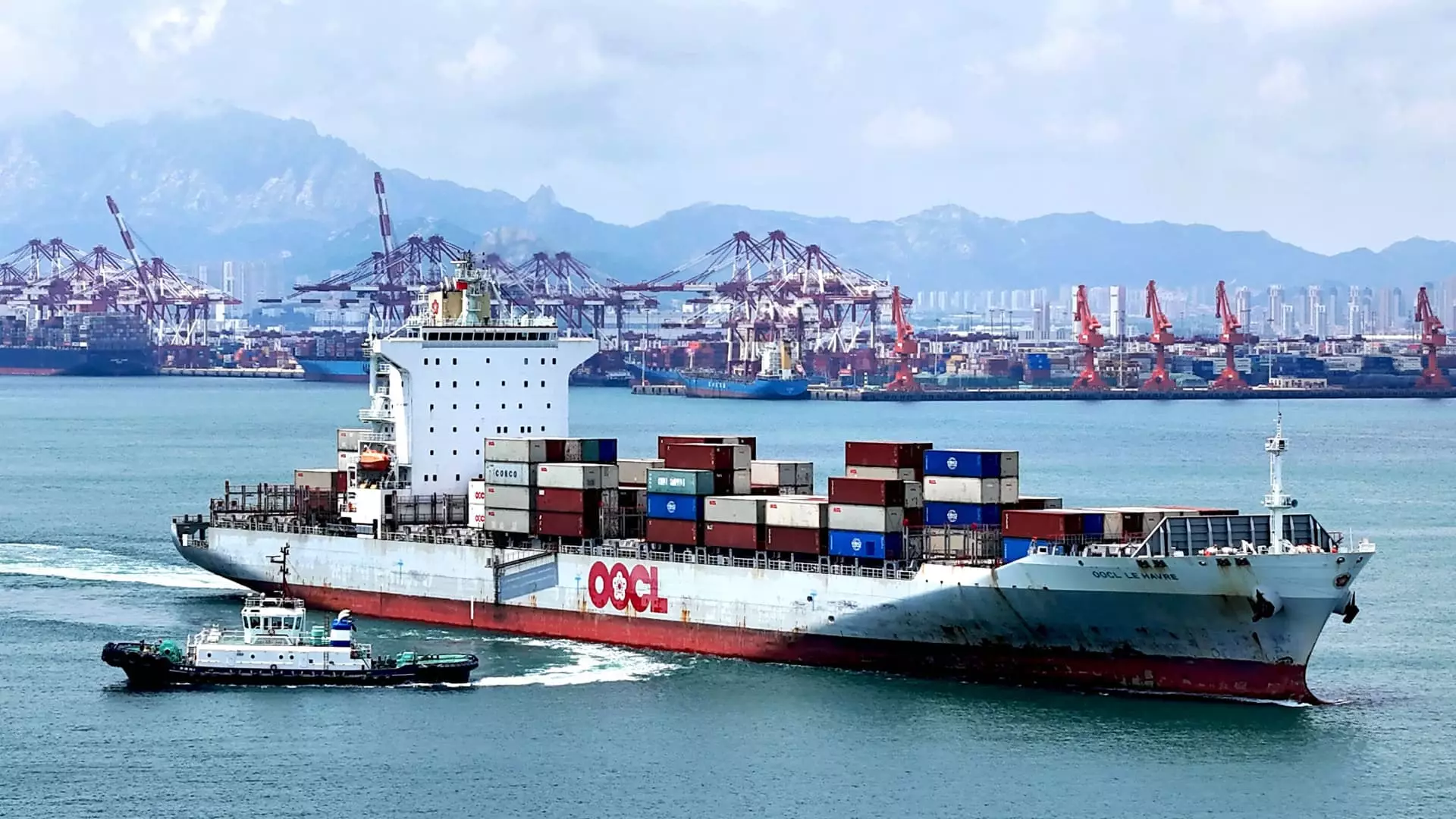China’s trade figures in November present a complex narrative that raises significant concerns about the current condition of the nation’s economy. The latest customs data indicates that both exports and imports fell short of expectations, illuminating a decline in consumer demand and ongoing tariff threats that could further complicate trade dynamics. This article delves deeply into the recent statistics, evaluates the potential implications, and discusses the broader economic context that shapes China’s trade landscape.
Disappointing Trade Data Signals Economic Headwinds
The latest data released by China’s customs authority reveals alarming trends in the country’s trade performance. November’s statistics show a notable decline of 3.9% in imports—marked as the steepest drop since September 2023—against an analyst expectation of a 0.3% increase. In contrast, while exports did register a nominal growth of 6.7% year-over-year, this figure pales compared to the 12.7% growth from the previous month. Analysts had anticipated a more robust growth figure of 8.5% for November, underscoring a divergence between projections and reality.
The drop in imports suggests not only tepid domestic demand but also raises questions regarding China’s manufacturing strength and the overall health of its economy. Unless addressed, these challenges could lead to a more pronounced slowdown, with potential ripple effects across the global supply chain.
Despite this downturn, some experts maintain an optimistic outlook for China’s export sector. Zichun Huang, a China economist from Capital Economics, argues that this export slowdown is not indicative of an end to China’s recent export success. The anticipated impact of U.S. tariffs, projected to dent export volumes by approximately 3%, may not fully materialize until later in the year 2024. Interestingly, Huang suggests that these threatened tariffs might prompt American businesses to increase their orders of Chinese products in the short term, potentially spiking export figures.
Moreover, Huang postulates that if accelerated fiscal spending ramps up demand for industrial commodities, it could result in a short-term recovery in import volumes. Such a recovery could provide a temporary buffer against the broader economic slowdown.
China’s export data presents a mixed bag when examined by trading partner. Notably, exports to the ASEAN nations experienced a substantial rise, increasing by nearly 15%. This contrasts starkly with the 3% decline in imports from these same countries. The data shows exports to the U.S. increasing by 8%, while the nation concurrently experienced a sharp 11% drop in imports from its largest trading partner. Similarly, exports to the European Union surged by 7.2%, yet imports decreased by 6.5%.
Interestingly, exports of rare earth elements, vital in modern technology, rose nearly 5%. However, the significant drop—over 20%—in rare earths imports reflects China’s ongoing efforts to tighten oversight in this strategically important sector due to national security concerns.
Long-Term Export Trends Amid Domestic Challenges
Despite the current hurdles, China’s cumulative exports through November still reflect a year-on-year increase of 6.6%, totaling $3.24 trillion, while imports grew by only 1.2%. This divergence in trade growth underscores an economy grappling with weak domestic consumption and a protracted downturn in the housing sector.
The steel export sector appears resilient, demonstrating a remarkable growth of 16% in November alone, driven by robust global demand. Forecasts suggest that China may well surpass the 100 million metric ton mark in steel exports this year, a level not observed since 2016. Such an uptick signifies that while domestic consumption falters, external demand for certain commodities remains robust.
Policy Adjustments in Response to Economic Pressures
In light of these challenges, a day before the release of trade data, China’s leadership signaled intentions to ramp up both monetary and fiscal stimulus to invigorate economic growth in 2024. This commitment to “unconventional counter-cyclical adjustments” aims to stimulate domestic consumption and potentially bolster the sagging economy.
Analysts predict an uptick in export growth moving into early 2025, as U.S. importers are likely to preemptively purchase more Chinese goods, aiming to avoid future tariffs. However, this optimism must be tempered with caution, as significant declines in consumer demand may follow in the latter half of the year as tariffs take effect.
While China’s November trade figures reveal troubling signs of economic fragility, the potential for recovery remains intertwined with broader fiscal strategies initiated by the government. The interplay between rising exports and declining domestic consumption encapsulates the current challenges facing the world’s second-largest economy. How effectively China navigates this complex environment will be crucial in defining its economic trajectory in the coming months and years. As stakeholders analyze these developments, it will be vital to monitor both trade trends and domestic economic policies to grasp the full picture of China’s unfolding economic narrative.


Leave a Reply